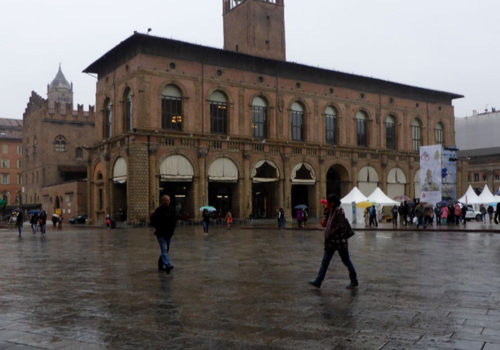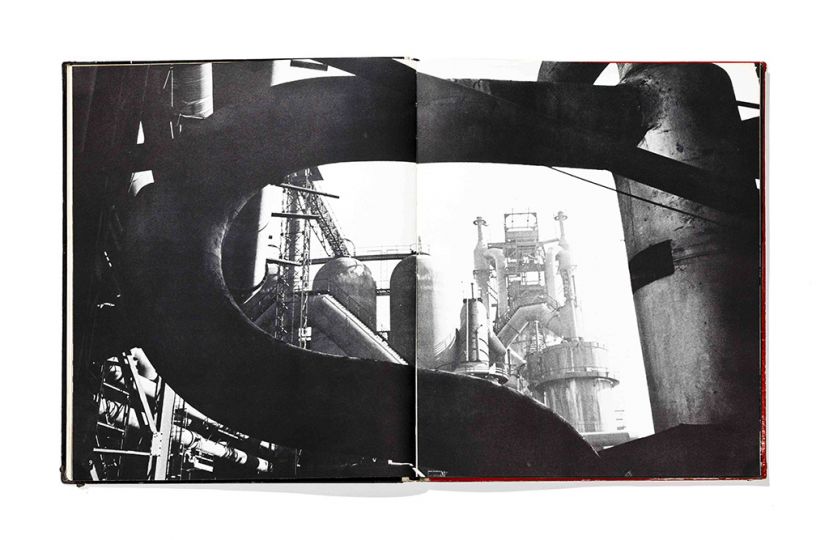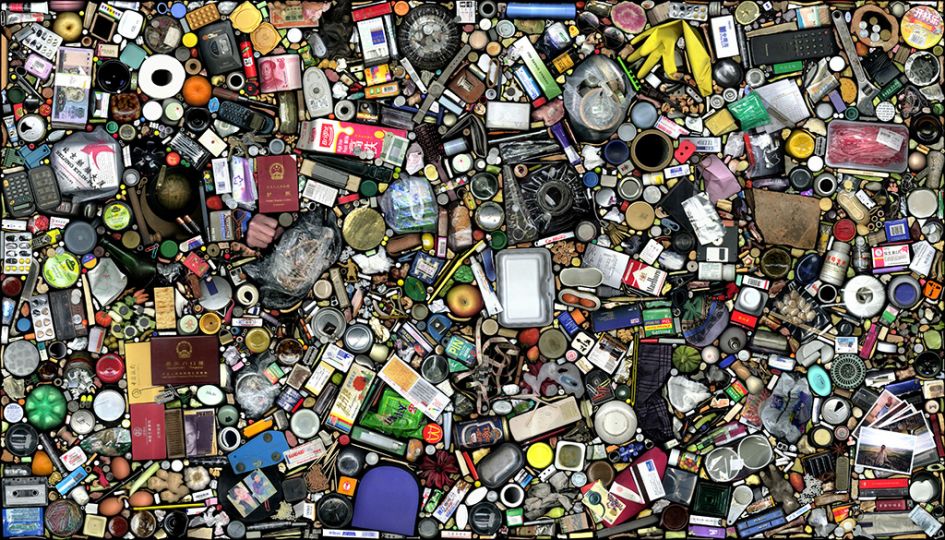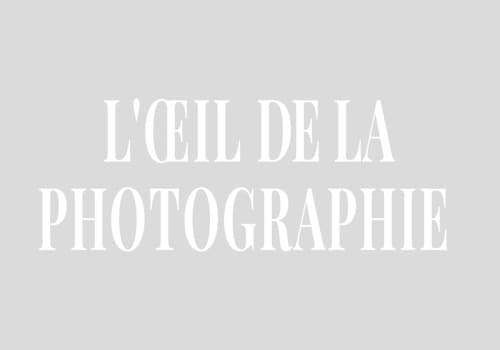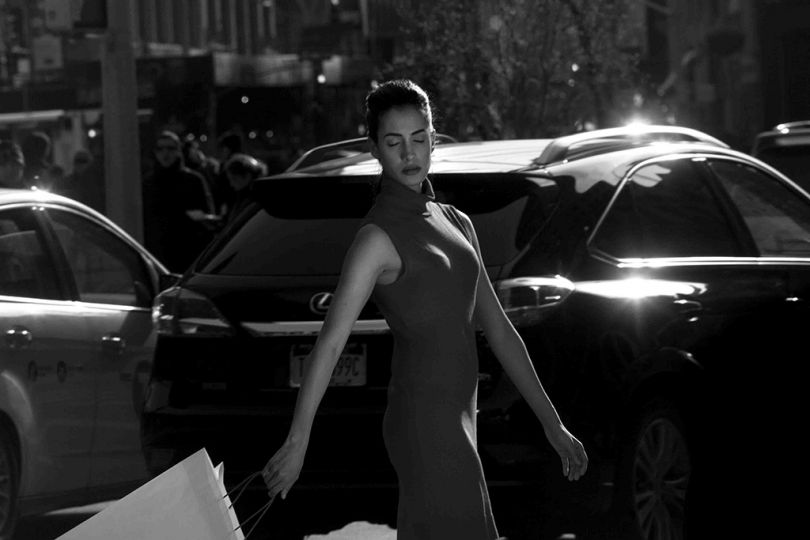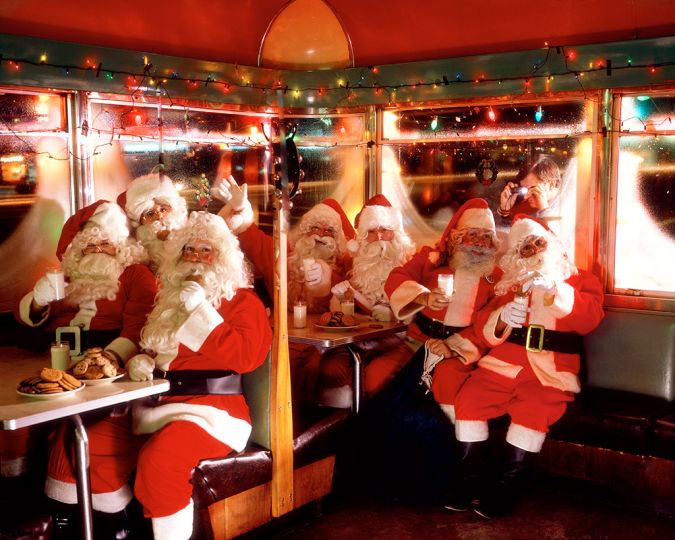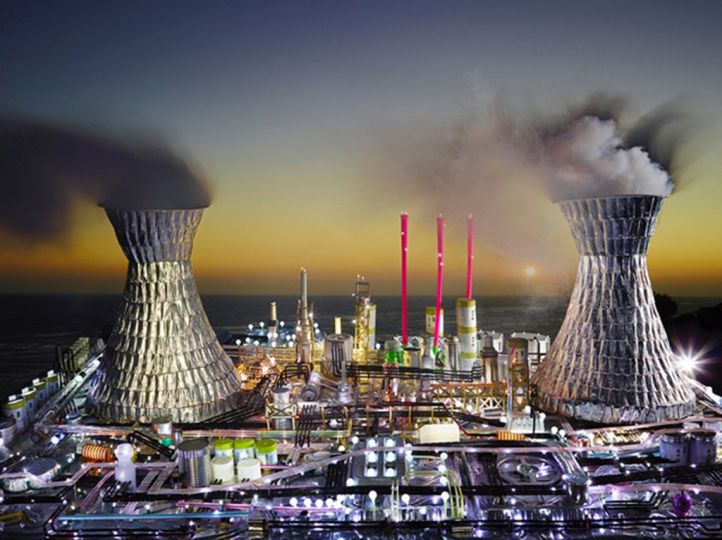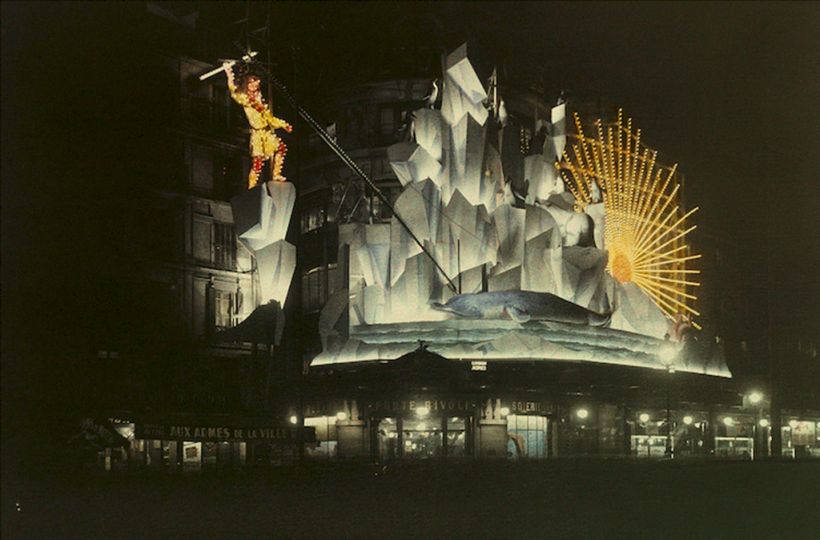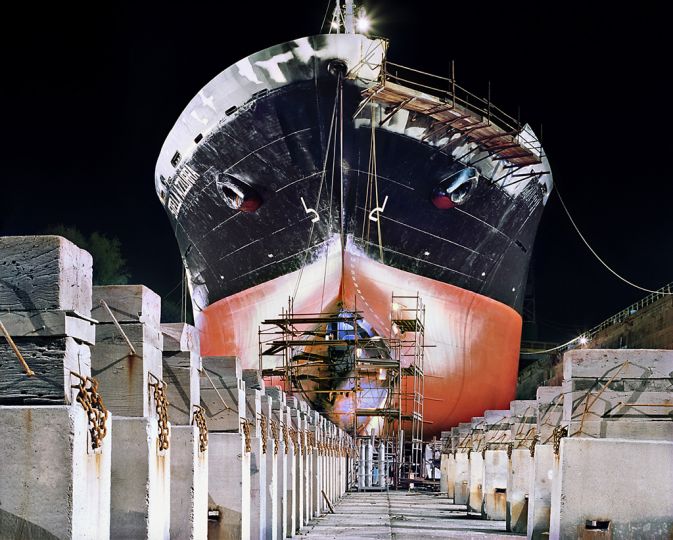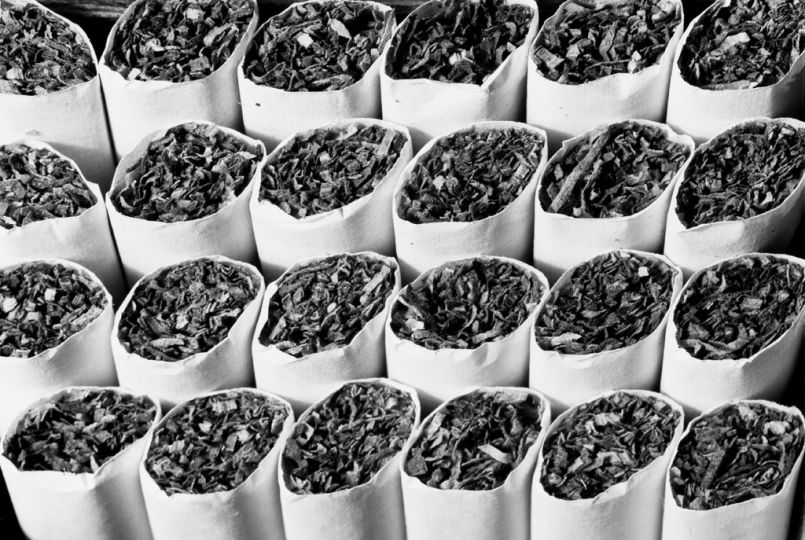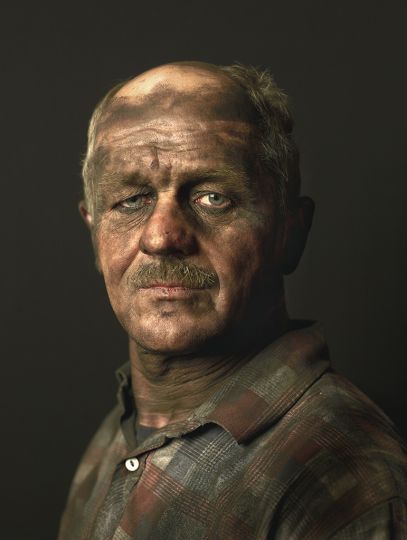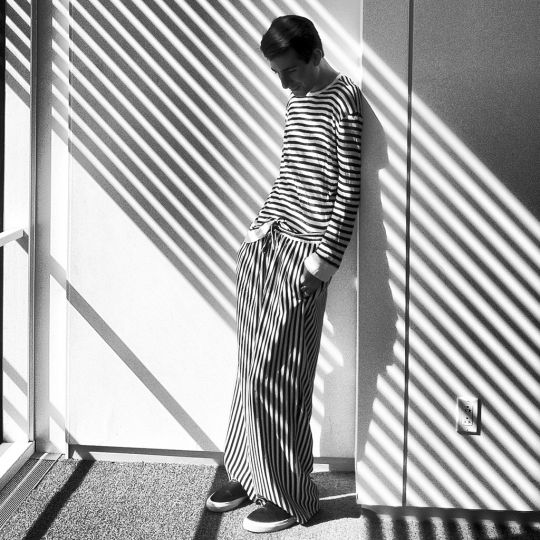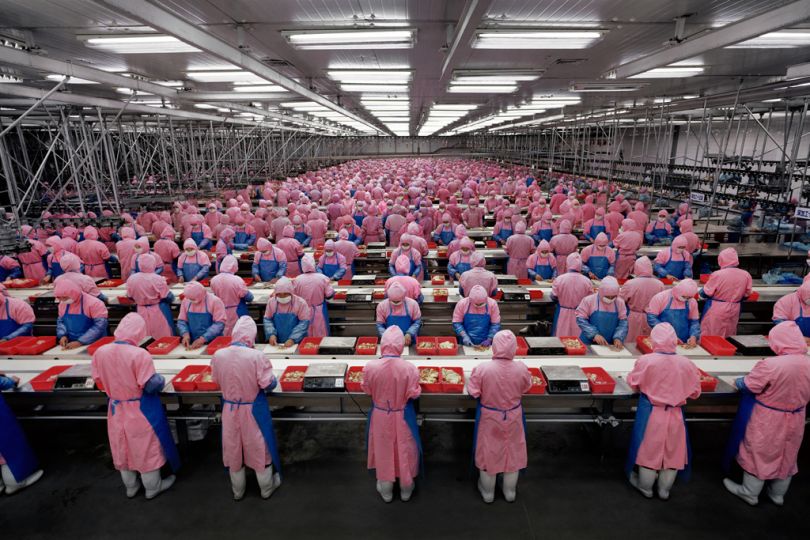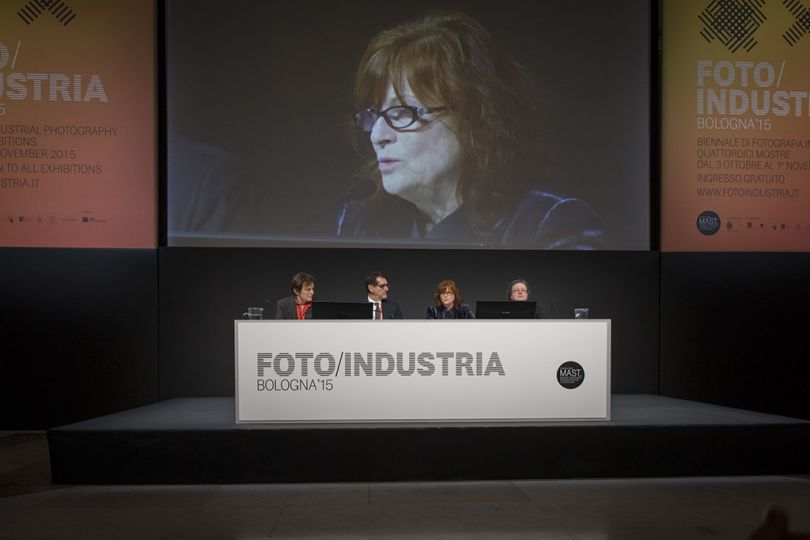It’s a rainy and misty day, but Bologna (The red one) is, if possible, even more red than ever. Its 38 kilometres of porticoes, fully reveal their fascination as well as their usefulness, connecting the various exhibit venues of Foto/Industria Bologna’15. Palazzo Re Enzo opens its huge and ancient doors to more than nine hundred people listening to presentation of the second Biennal, promoted and organized by the MAST Foundation in collaboration with the City of Bologna.
Under the vaults of the Salone del Podestà, Mayor Virgilio Merola focuses the strong connections between the culture of the local community and the themes of industry and work through art photography, while Isabella Seràgnoli, chairman of the MAST Foundation, explains that through the Biennial and its collateral initiatives, the Foundation consolidates attention to industry looking for a sense of belonging to the city, even by exploring the world of industry, an unique presence in the Italian panorama. The Foundation also wishes to promote Bologna as a protagonist of international photography focusing on industry and labor. The artistic director, François Hébel, underlines this second biennial deals with all forms of work, through chapters dedicated to production, post-production, producers, pause and products. Urs Stahel, curator of the collection and the MAST PhotoGallery, points out the commitment of the MAST Foundation to young people with the GD4PhotoArt competition, won this year by Óscar Mònzon, and of the treasure on the industrial past represented by books, with an exhibition of 120 volumes from the Savina Palmieri Collection.
In a word: fourteen quite interesting exhibitions, guided visits by curators and artists as well as a rich program of events. That’s the frame of the Biennial, not least the magnificence of the exhibit venues, hosted in ancient palaces and museums with colonnades and galleries, with frescoed vaults and noble stairways: FOTO/INDUSTRA can also be thought of as a double visit itinerary: the first one for photography, the second for history, paintings and architecture.
Under a light rain (trying to follow the porticoes path) you can experience the impact of images contextualized under groups of sculptures or on wide white walls, situations which both highlight them.
#1. First stop is at Santa Maria della Vita, where the (Other) Workers by Pierre Gonnord seem to look at us from their portraits, which the authors says are born from a fragile and silent intimacy that struggles against the sinking into oblivion, with subjects who are anonymous, but who belong to a defined social clan, sure of their identities when ours is becoming indistinct. There are portraits of coal miners, of workers on agricultural huge estates, mirrored by the sculpted group by Alfonso Lombardi (XVI century).
#2. Some more light drops of rain and Palazzo Paltroni offers Man, Work, Machine by Gianni Berengo Gardin, together with the emotion to meet and to speak with this master of Italian photography, a volcano of ideas which never stops projecting and producing new works. “Berengo needed this precise sequence of terms to define his long association with factories, companies, and laboratories, never forgetting his attention to human beings: their activities, their emotions, the important events in their lives”, says curator Giovanna Calvenzi.
#3. With Hein Gorny photos one can almost feel the ambience of the Bauhaus and the Deutscher Werkbund, for he was a much sought-after industrial and commercial photographer in Germany during the 1920s-1930s, interpreting industrial commissions as “product and image design”.
#4. Neal Slavin is the next author, to remain in the production area. In the 1980s, he gained success by revolutionizing group photography by creating authentic staging linked with the trades or professions he was shooting, trying to approach his subjects in order to give them a personality. These photos can sometimes be compared to film production, they are full of irony and color.
#5. Very large formats for the impressive images by David Lachapelle (Post-Production section), at the Pinacoteca Nazionale. Known internationally for his thought-provoking images, LaChapelle’s newest series Land Scape uses hand-crafted scale models to explore the infrastructure of oil production and distribution, illustrating the impact it has on modern society.
# 6. Climbing the vast staircase and crossing some beautiful rooms of Palazzo Pepoli Campogrande, leads to the large format projections of Edward Burtynsky work, which systematically embraces vast space. New geometries carved out by man, the graphic tension between landscapes sculpted for centuries by agriculture using limited, and therefore delicate means, contrast with the brutality of modern machinery, evoking irreversibility, pollution and devastation in progress.
#7.#8. From the beginning to the newest way of producing images. That’s what you can consider, looking at the images by Léon Gimpel work and immediately later on to those of Kathy Ryan. In a word: from the 1920s, when he was writing with lights for his nocturnal autochromes of Paris to the shots by Kathy which started, almost by chance, to take pictures with her iPhone. Indeed, Kathy Ryan is not a photographer; she is the benefactor of photographers. For thirty years, she has been photo editor, selecting the photos for the pages of the «New York Times Magazine». She says she takes shots just for fun, but her photographic notebook says lots of things, first of all that the image can be more important that the means you use to get it.
#9. Trains. Winston Link’s images are a tribute to steam locomotives (even when you have to look in order to discover it within the photo). Between 1955 and 1959 he created an unusual body of images, taking nocturnal photographs of one of the last great steam locomotive railways in the United States, the Norfolk and Western Railway, before its replacement by diesel locomotives. At the same time he managed to convey landscape and family life, in a sort of nice puzzle to be discovered in each image.
#10. Details are enormous in The Poetry of the Giants by Luca Campigotto. The bow of a boat occupies two thirds of the already vast image, a heap of cables suggests the vastness of a ship, or the glimmer of an industrial building window give hints of unseen activity. His work follow a sort of binary scale, starting from details which transmit emotions and information.
#11. #12. Still raining, still cold. But once you start to discover photos, you cannot stop. So at Mambo, you meet Hong Hao , who present his project. He has been working on it for 12 years, day by day. He puts his daily consumed objects into a scanner (having so an intimate relationship with them), like keeping a visual diary, in order to make collages of them. And to represent our contemporary consumerism. Just another location and other images, some particular ones, for their author is a surgeon specialized in cancer treatment, who produced a work made by a mixture of hand-written diagnoses, analysis results, graphs and photos, he combines a scientific approach to patients with a sensitive awareness of their humanity.
#13. #14. It’s late afternoon now and it’s time to reach and visit the MAST (Manifattura di Arti, Sperimentazione e Tecnologia – Arts, Experience and Technology). Imposing and impressive, designed by Studio Labics in Rome. It is a most properly site for industrial photography and it’s opening its doors tonight to visitors, among lights and interesting design features, to present the GD4Photoart Competition Finalists Marc Roig Blesa, Raphaël Dallaporta, Madhuban Mitra & Manas Bhattacharya with their interesting projects. An area is dedicated to the contest winner, Óscar Monzón, who, in his project Karma, turned his gaze to automobile culture with the eyes of a paparazzo and an advertising agent. Just a floor below, the exhibit, from the Savina Palmieri Collection, uses 120 volumes from Italian industry to trace the development of photography books, from the album, through the booklet and, later, the book.
In practice:
– POST-PRODUCTION:
David Lachapelle, New York, Usa
Land Scape
Pinacoteca Nazionale, Via Belle Arti, 56
Hong Hao, Beijing, China
My Things, Bottom
Istituzione Bologna Musei, Mambo – Museo D’arte Moderna Di Bologna Via Don Minzoni, 14
– PRODUCTION:
Edward Burtynsky, Toronto, Canada
Manufactured Landscapes
Palazzo Pepoli Campogrande, Via Castiglione, 7
O. Winston Link, New York, Usa
Norfolk and Western Railways
Fondazione Cassa Di Risparmio In Bologna, Casa Saraceni, Via Farini, 15
Luca Campigotto, Milan, Italy
The Poetry of the Giants
Spazio Carbonesi, Via De’ Carbonesi, 11
– PRODUCERS:
Pierre Gonnord, Madrid, Spain
(Other) Workers
Genus Bononiae, Santa Maria Della Vita, Via Clavature, 8
Neal Slavin, New York, Usa
Group Portraits
Spazio Carbonesi, Via De’ Carbonesi, 11
Gianni Berengo Gardin, Milan, Italy
Man, Work, Machine
Fondazione Del Monte, Palazzo Paltroni, Via Delle Donzelle, 2
– PAUSE
Kathy Ryan, New York, Usa
Office Romance
Istituzione Bologna Musei, Museo Internazionale E Biblioteca Della Musica, Strada Maggiore, 34
Jason Sangik Noh, Seoul, South Korea
Biography of Cancer
Istituzione Bologna Musei, Villa Delle Rose, Via Saragozza, 228/230
– PRODUCTS:
Hein Gorny, Berlin, Germany
New Objectivity and Industry Collection Regard
Genus Bononiae, Museo Della Storia Di Bologna, Via Castiglione, 8
Léon Gimpel, Paris, France
Illuminations, Paris, 1925, Société Française de Photographie
Museo Di Palazzo Poggi, Sma – Sistema Museale D’ateneo, Via Zamboni, 33
GD4PHOTOART COMPETITION FINALISTS
Marc Roig Blesa
Raphaël Dallaporta
Madhuban Mitra & Manas Bhattacharya
Óscar Monzón
Mast Gallery, Via Speranza, 42
From Albums To Photobooks
Italian Industry In 120 Volumes
Savina Palmieri Collection
Mast Gallery, Via Speranza, 42
The FOTO/INDUSTRIA BOLOGNA ’15 programme also includes:
– Conversations with Foto/Industria artists and other Italian and international guests who will examine themes related to industrial photography and the world of work.
– A long weekend in the MAST Auditorium, from 9 to 11 October, dedicated to screenings on work, organized in collaboration with Cineteca di Bologna.
– Musical performances in collaboration with roBOt Festival, AngelicA and the “Giovan Battista Martini” Conservatory
– Foto/Industria White Night on 31 October in all the exhibition venues open until midnight, with musical moments.
– Appointment dedicated to kids and teens to discover the world of photography with the KIDS WORKSHOP by Nino Migliori at the MAST kindergarten/nursery school.
The exhibitions are accompanied by catalogues and publications.
FESTIVAL
FOTO/INDUSTRIA BOLOGNA ’15
02.10.2015 > 01.11.2015
Various venues in Bologna and Mast
Free entrance

